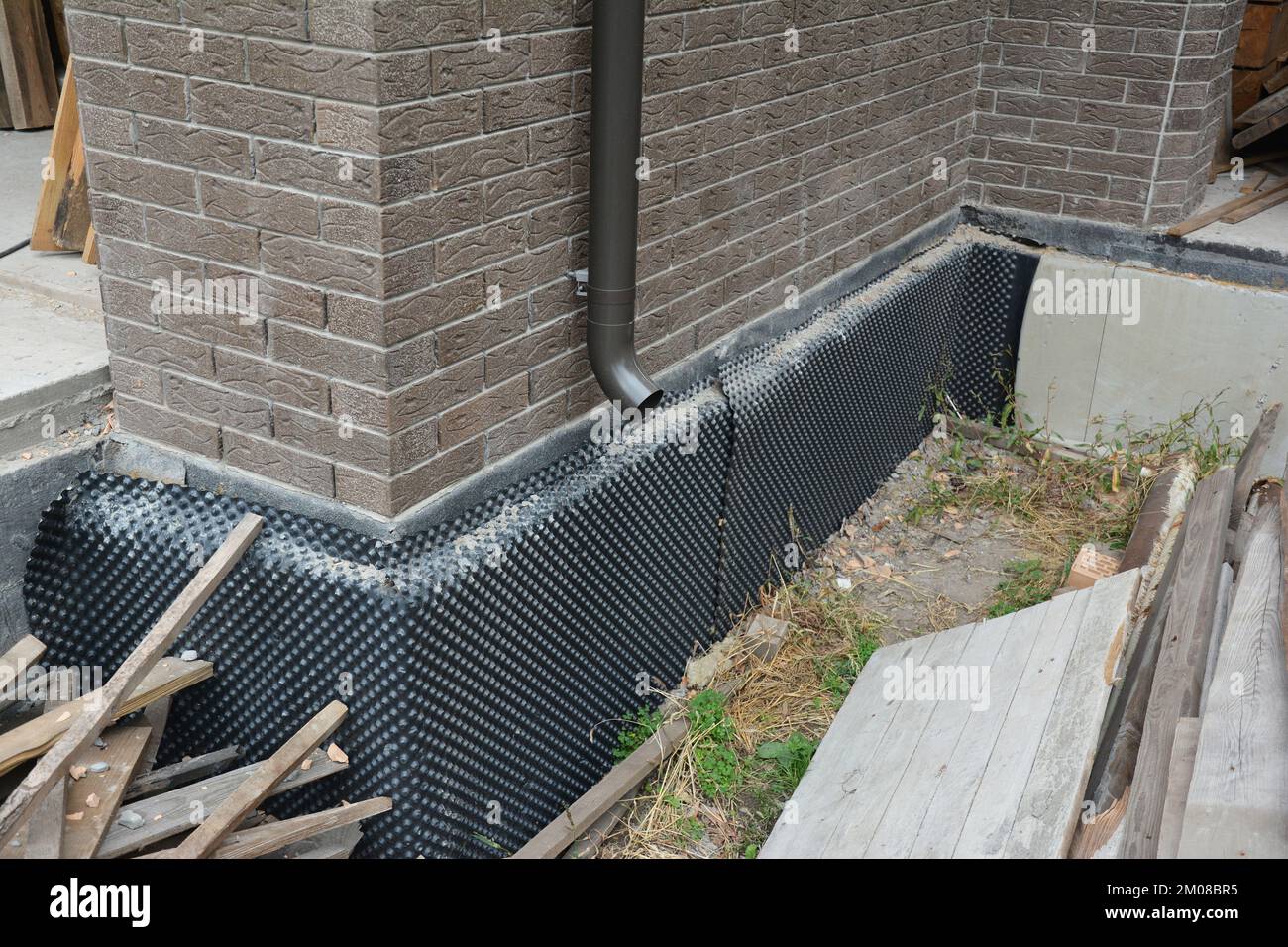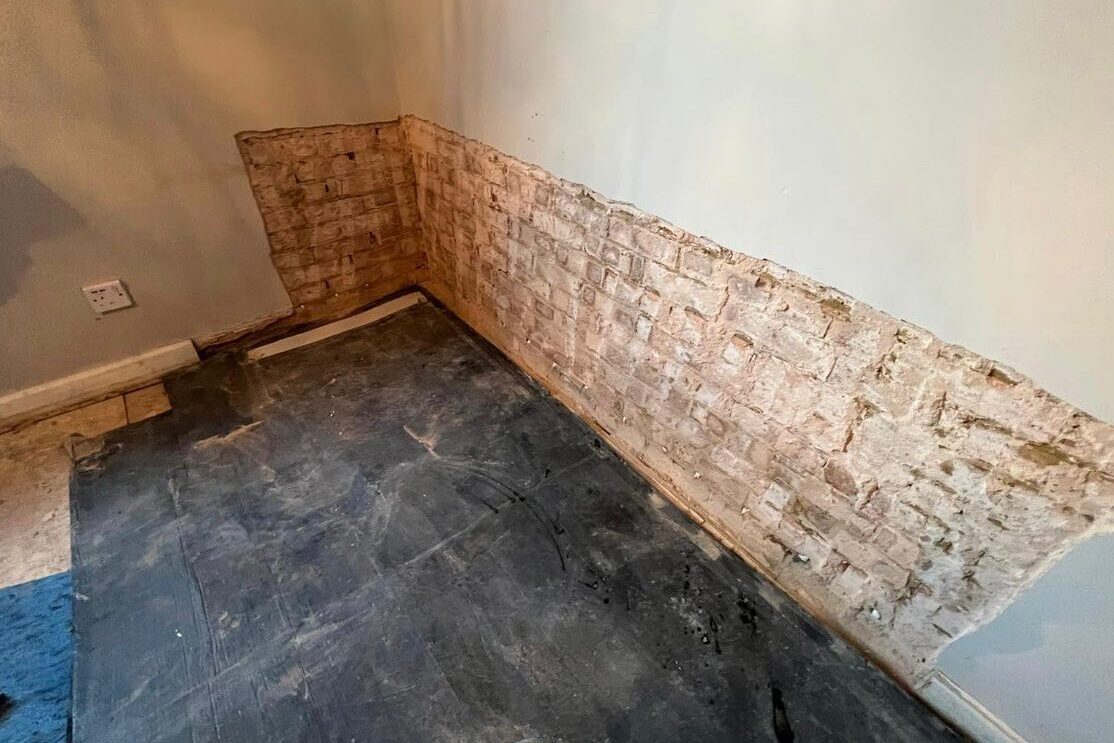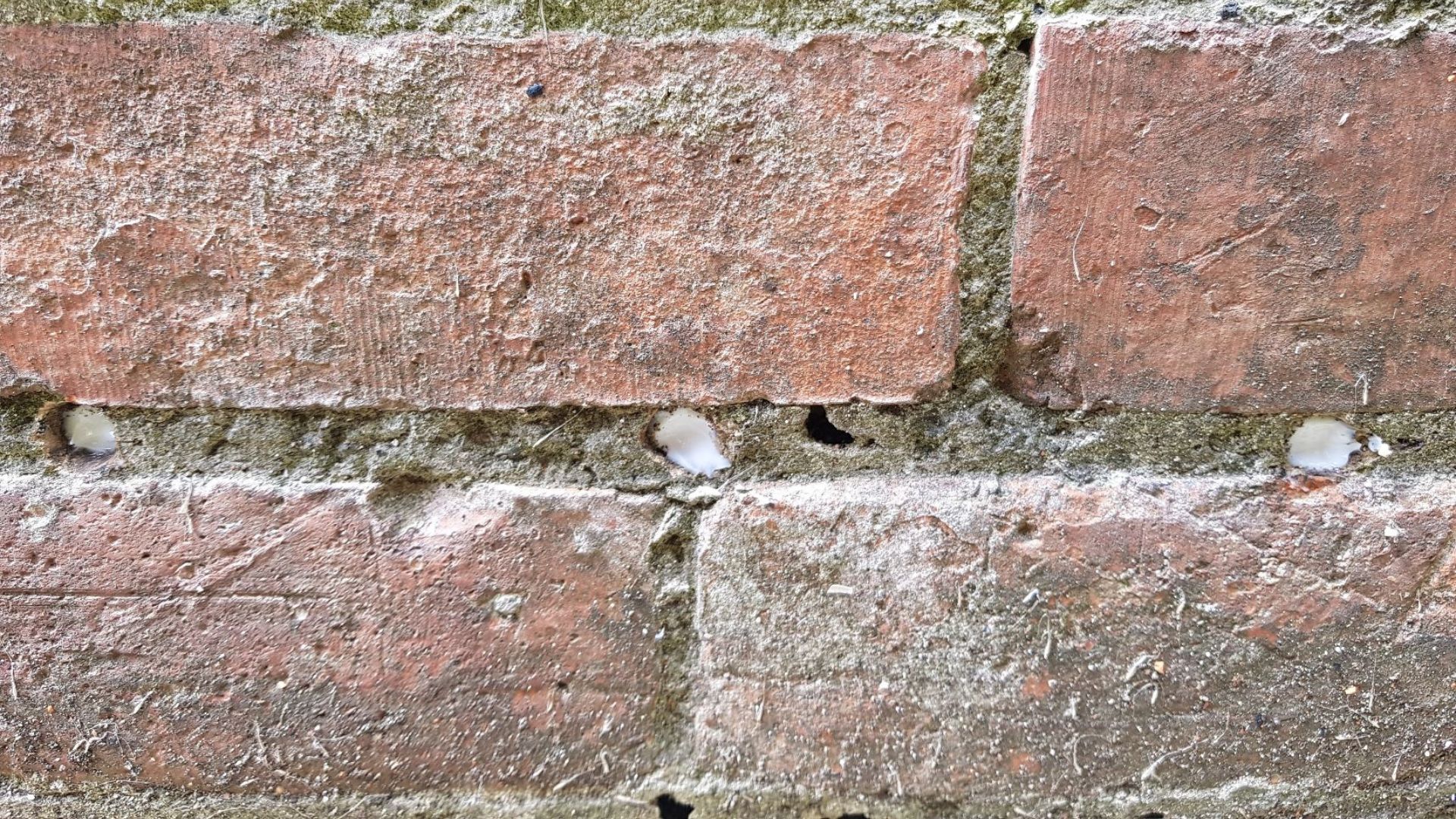Why investing in hiring a mould treatment newcastle professional
Why investing in hiring a mould treatment newcastle professional
Blog Article
Discovering the Different Techniques and Solutions for Effective Damp Proofing
Dampness in structures presents significant difficulties to both architectural stability and interior air quality. Different methods and remedies have emerged to combat this prevalent issue. From conventional damp-proof membrane layers to cutting-edge chemical therapies, each approach uses distinct benefits. Understanding these options is important for effective moisture control. Picking the ideal option depends on details structure conditions and needs, motivating further exploration right into the most reliable damp proofing techniques offered.
Understanding the Sources Of Dampness
Although moisture can develop from various sources, understanding these reasons is vital for effective removal. Frequently, wetness originates from three main sources: increasing moist, passing through moist, and condensation. Rising damp takes place when groundwater travels up with porous products, such as block or rock, usually due to a lack of an effective obstacle (mould treatment newcastle). Penetrating wet is usually triggered by exterior elements, consisting of roof covering leakages, defective gutters, or harmed wall surfaces, permitting water to infiltrate a home. Condensation, on the other hand, arises from excess moisture in the air, commonly intensified by bad air flow and temperature differences, causing water droplets developing on surfaces. Determining these underlying issues is vital, as each sort of dampness calls for a customized technique for removal. Correct assessment helps in determining the most efficient remedies, inevitably guarding the structural stability of a structure and boosting interior air quality
Conventional Damp-Proof Membranes

Chemical Damp-Proofing Solutions
Chemical damp-proofing solutions provide a cutting-edge method to protecting against moisture intrusion in buildings. These methods normally entail the application of liquid chemicals that penetrate masonry and form a barrier versus increasing wet. Typically utilized chemicals include silanes, siloxanes, and various other water-repellent representatives that react with surface area products to create a hydrophobic layer.The application procedure generally needs boring openings into the wall surfaces, injecting the chemical service, and permitting it to treat. This method is particularly beneficial for older structures where traditional damp-proof membrane layers might be unwise. Chemical damp-proofing can be less turbulent and more affordable than comprehensive renovation projects.While efficient, these services depend on proper application and ecological problems for peak performance. mould removal newcastle. Routine upkeep and tracking are important to assure the durability of the damp-proofing therapy. Generally, chemical damp-proofing stands for a flexible choice for guarding structures versus moisture-related damages
Dental Caries Wall Building Strategies
Cavity wall surface building and construction methods provide numerous benefits, particularly in wetness control and energy performance. By incorporating an air space in between two layers of masonry, these walls properly reduce water ingress while boosting insulation. This mix not only shields frameworks from moisture however additionally adds to reduced energy intake.
Advantages of Tooth Cavity Wall Surfaces
When considering efficient damp proofing approaches, the advantages of dental caries wall surfaces stand apart plainly. Cavity walls contain 2 separate layers, developing an air void that successfully minimizes moisture penetration. This layout reduces the risk of wetness, as the outer wall functions as a barrier versus rain and water access. Furthermore, dental caries wall surfaces boost thermal insulation, which contributes to energy performance by decreasing heat loss. They additionally provide sound insulation, aiding to develop a quieter indoor setting. In addition, the air void permits air flow, which aids in moisture control and reduces the chance of mold and mildew development. These advantages not only improve the total comfort of a building however additionally add to its longevity and architectural honesty.
Moisture Control Approaches
Reliable dampness control techniques are crucial in cavity wall surface building to ensure lasting protection against dampness. One key method includes the incorporation of weep openings, which assist in water drain from the tooth cavity, stopping build-up. Furthermore, using breathable membrane layers can aid take care of wetness degrees while enabling caught vapor to escape. Proper placement of insulation is also essential, as it needs to not block drainage paths. Furthermore, making certain that the outer fallen leaves of the tooth cavity wall are created with waterproof products enhances total durability. Routine maintenance checks are vital to recognize any type of blockages or damage early, securing the structure's stability. Inevitably, a mix of these techniques forms a durable protection versus moisture invasion in dental caries wall surfaces.
Insulation and Energy Efficiency
Insulation plays a crucial role in boosting energy effectiveness within dental caries wall construction. By integrating insulating materials, these walls create a thermal barrier that reduces warmth loss and lowers power consumption. Effective insulation not just helps preserve a steady indoor temperature but also minimizes the danger of moisture, as it protects against condensation within the wall surface tooth cavity. Different methods, such as the usage of rigid foam boards or mineral woollen, can be used to attain perfect insulation performance. Additionally, appropriate installation is important to assure that spaces and spaces are lessened, which can otherwise endanger energy efficiency. Ultimately, a well-insulated dental caries wall surface adds considerably to general sustainability and lowers heating & cooling costs for homeowners.
External Damp Proofing Methods
Outside wet proofing approaches are necessary for shielding structures from wetness infiltration. Two effective techniques consist of the application of waterproof membrane layers and the setup of French drains pipes. These options help reduce water buildup and preserve the stability of structures.
Waterproof Membrane Application
While numerous approaches exist for stopping moisture access, the application of waterproof membranes remains an extremely effective exterior damp proofing strategy. These membranes are normally made from products such as polyethylene, rubber, or modified asphalt, supplying a robust obstacle versus water infiltration. The installment procedure entails using the membrane layer to the outside surface areas of structures or wall surfaces, making sure complete coverage to stop leaks. Appropriate adhesion and sealing at joints are important to optimizing efficiency. Water-proof membrane layers can be used in various types, consisting of fluid coverings and sheet membrane layers, allowing for flexibility based upon the details demands of the structure. This approach not only secures structures from dampness but likewise boosts their durability and structural stability.
French Drainpipe Installation
One efficient method for taking care of groundwater and stopping wetness build-up around a building's structure is the setup of a French drain. This water drainage system contains a trench filled up with crushed rock and a perforated pipeline that redirects surface water away from the structure. Correct setup calls for mindful planning, guaranteeing that the drainpipe slopes away from the structure to promote suitable water flow. Additionally, the place of the drainpipe is essential; it ought to be placed in locations susceptible to pooling or excess dampness. Regular upkeep, consisting of clearing up debris from the crushed rock and guaranteeing the pipe continues to be unobstructed, is important for lasting efficiency. Inevitably, a well-installed French drainpipe can substantially decrease the danger of water-related issues in foundations and basements.
Inside Waterproofing Strategies
Inside waterproofing approaches are important for shielding a building's inside from moisture infiltration and potential water damages. These approaches typically involve the application of customized products and methods created to create a wetness barrier within the framework. One common method is making use of water resistant coatings or sealers on wall surfaces and floorings, which prevent moisture from penetrating surfaces.Additionally, installing interior drain systems, such as sump pumps, can efficiently take care of water accumulation in basements and creep rooms. An additional method includes making use of vapor obstacles, which are mounted to inhibit wetness movement from the ground right into living spaces.Moreover, dealing with any splits or gaps in wall surfaces or structures with suitable sealers ensures a thorough protection versus water intrusion. By executing these click here interior waterproofing approaches, building proprietors can greatly reduce the threat of mold and mildew development, architectural damage, and various other moisture-related problems. Correct implementation of these strategies is necessary for lasting security and structure honesty.
Routine Upkeep and Examination Practices
Regular maintenance and inspection techniques are important for assuring the lasting efficiency of wet proofing remedies in any type of building. Routine checks make it possible for homeowner to identify early indications of dampness invasion, such as peeling paint, mold growth, and musty odors. These indicators can signal underlying problems that need instant attention.Inspections ought to be performed at the very least annually, concentrating on prone locations like basements, crawl areas, and outside walls. Throughout these evaluations, homeowner should take a look at sealers, drainage systems, and air flow to validate they operate correctly.Additionally, preserving downspouts and gutters is necessary, as clogged systems can lead to water build-up near the foundation. Executing a normal upkeep timetable, along with timely repair work, can considerably prolong the life-span of wet proofing steps and shield the structural integrity of the structure. Positive steps eventually add to the total health and wellness of the living environment.
Often Asked Inquiries
For How Long Does Damp Proofing Commonly Last?
The duration of wet proofing effectiveness varies, commonly lasting in between 20 to 50 years. Aspects such as application top quality, environmental conditions, and upkeep techniques considerably affect the long life of the wet proofing therapy.

Can I Damp Proof My Home Myself?
The specific considered the usefulness of DIY damp proofing. With correct study and the appropriate materials, it is feasible. They likewise recognized the significance of specialist support to guarantee long-lasting performance and protect against future problems.
What Are the Indicators of Ineffective Damp Proofing?
Signs of inefficient moist proofing consist of consistent stuffy smells, noticeable mold and mildew development, peeling paint, wet spots on wall surfaces, and timber degeneration - mould removal newcastle. Home owners ought to address these problems promptly to stop further damage and health issues
Does Damp Proofing Affect Indoor Air High Quality?

Just How Much Does Expert Damp Proofing Price?
Expert damp proofing costs differ substantially, normally ranging from $1,000 to $5,000 depending on the property's size, the extent of the moist concern, and selected methods. Each situation requires a tailored assessment for exact pricing. Commonly, dampness stems from 3 main resources: climbing moist, passing through wet, and condensation. When considering effective damp proofing approaches, the benefits of cavity wall surfaces stand out prominently. Outside damp proofing approaches are essential for safeguarding structures from dampness infiltration. While various techniques exist for avoiding moisture access, the application of waterproof membrane layers stays a highly effective external wet proofing method. Signs of ineffective moist proofing consist of relentless moldy smells, visible mold growth, peeling off paint, wet spots on wall surfaces, and wood decay.
Report this page